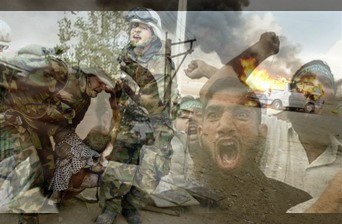
Secretary of Defense Gates talks about the defense budget, and defends recent cuts, particularly cuts to the F-22 Raptor:
SEC. GATES: I think what we’re trying to do is not reduce emphasis on conventional warfare, but be more selective about the weapons systems that we fund to fight that kind of a fight. I’m not cutting the F-22; I’m not recommending the F-22; I’m simply recommending that the program set in 2005 was to build 183 of these aircrafts. I’m simply saying, let’s finish that program and then let’s focus on buying large numbers of the Joint Strike Fighter, the F-35, which has 10- to 15-year newer technology, has some capabilities that the F-22 doesn’t have.
The F-22 is a great airplane, all you have to do is ask the pilots who fly it, but – and it will remain in the inventory, but there is no military requirement for more than 183 of them, 187 with those that are in the supplemental. So we’re doing that, we’re building additional ships, we’re doing more in the way of theater and tactical ballistic-missile defense. We’re converting more ships to have ballistic-missile defense that would help against China. So I think there’s kind of a misunderstanding of exactly what it is we’re trying to do here. We’re trying to be more selective about systems that actually work and that can be delivered in a reasonable period of time than some of these exotic systems.
Regarding missile defense:
SEC. GATES: We have two threats: theater and tactical ballistic missiles and ballistic missiles, intercontinental ballistic missiles from rogue states like North Korea. We are significantly increasing the missile defense capabilities to deal with the theater and tactical threat, from Iran or Hezbollah or others like that, in a number of different ways – a lot of money being added to the budget.
We are not cutting the number of interceptors in Alaska, we are going to fund – robustly fund research and development to keep enhancing their capabilities, we are keeping alive the airborne-laser program, we are just not buying a second research platform. We’re going to make do with one 747 to do this research. The procurement program was completely out of control, with 27 47s and so on and so forth. So I think we are doing a lot, we do very well with terminal defense, with THAD and the theater missile. We do very well at midcourse with the ground-based interceptors in Alaska and California.
Now, we’re continuing to do research work on the boost phase, where they’re just coming off the pad, and we have several programs, some of them classified, that are aimed at taking care of that. So I think we have really strongly supported missile defense, and I think that what we have taken out of the budget, frankly, were some experimental capabilities that were really not intended for the rogue-state missile threat but rather, a much larger threat. So I’m trying to conform our program to our policy. Our policy is to have a missile defense and it was – as it was in the Bush administration, our policy is to have a missile defense against rogue states, such as Iran and North Korea. That’s what our program does.
Popular Mechanics has more: The 7 winners and losers under Gates' proposed budget. Littoral combat ships and the F-35 win big, the Army's Future Combat System and F-22 lose.








